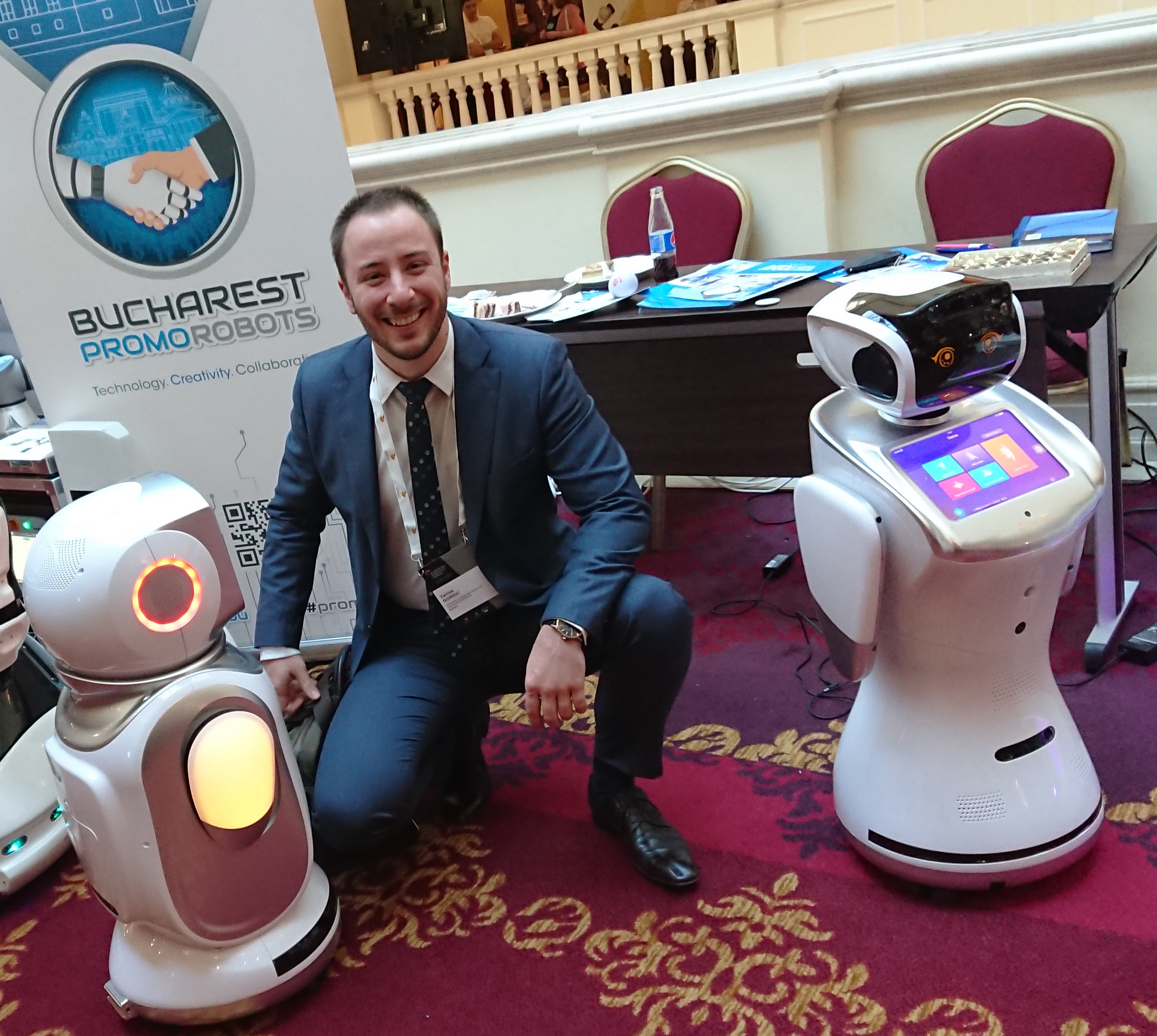Zavisa Gordic 

Tell us about your journey into robotics.
In secondary school I was interested in all technical sciences so by the time I was getting ready to go to the University of Belgrade I knew I was going to enter the School of Electrical Engineering (ETF). I became interested in robotics during the 3rd year of my undergraduate studies so my bachelor’s degree is in Mechatronics, Robotics and Automation Engineering and I stayed on to complete my master’s at ETF as well. For both bachelor’s degree and my master’s degree, I spent time in Germany, working as an engineering intern at the University of Siegen (where I also wrote my bachelor thesis) and then at SMS Siemag AG during my master’s. From there I then had the opportunity to stay at ETF for my PhD which I’ve recently completed.
Congratulations, Dr. Gordic!
Thanks! Actually I always wanted to be involved in a hands-on way with companies and I’d originally thought that the next stage of my career would take me into industry, so when ETF offered me a role, I wasn’t sure how that would enable me to get practical experience. But I was able to structure it so that I could work in parallel with two Italian technology providers whilst working towards the PhD.
And at some stage in this journey, ETF became a DIH. How did that happen?
We are an academic facility, but we also have a strong research focus. We have around 20 people who are pure researchers and much of that research can be applied in industry. Companies come to us because they believe in ETF, and they trust us. We have a good reputation, and our students are well regarded. We help manufacturers find Technology Providers and Systems Integrators, and we’ve become very successful at doing this over the past 10 years, but we were also aware that the funding piece was missing. Our first steps towards becoming the DIH we are today, were through the I4MS initiative where we carried out a feasibility study for a Serbian Manufacturing Innovation Hub. From there we became involved in a number of other Horizon2020 projects including ReconCell which was our first successful collaboration with an SME.
So, we know that you have a strong interest in Lego and you use it as a tool with students.
Indeed. I love it and I use it to get students interested in robotics. Back in 2012 we organised an event called Days of the Future: Robotics which lasted three weeks and around 200,000 people attended. We brought international robotics superstars such as Hiroshi Ishiguro and others and this is when we first saw the potential to use Lego to reach beyond the traditional audience. Now as a faculty we go into secondary schools to promote robotics and we organise summer schools and competitions with Lego robotics. You know with Lego you don’t need to worry about how you join pieces together – there’s no welding or gluing required – rather it’s a very simple plug and play methodology and it provides an easy introduction into robotics. All you need to apply to make it work is the engineering thinking. We compare the robot to a human, so for example how colour sensors are like our eyes, the motor is like our muscles and the controller is the human brain and this makes it easier for the students at this level to understand. The winners of our competitions get Lego Mindstorm sets so they can continue playing with it when they get home. I’m now very happy to see that more and more schools in Serbia have some type of engineering or robotics programme – even in some primary schools.
Do you think this will help create a better understanding of robotics in wider society?
You know, robotics isn’t the future for us in Serbia. We’re one of the birthplaces of robotics and working robots today use principles originally set out by Yugoslavian researchers. Back in the 1960s Professors Rajko Tomović, Miomir Vukobratović and their associates were creating the first artificial hand with five-fingers and in 1973 they developed an exoskeleton which was the first machine designed for walking disabilities. Factories in the former Yugoslavia were already using industrial robots in the 1970s. We had one of these early industrial robots in our faculty and used it to demonstrate to students how it works – it was excellent for education.
To help us deliver our belief in the power of robotics to transform the agility of manufacturing SMEs, we funded 26 Transfer Technology Experiments across Europe including ARP (Agile Robotized Processing) in Serbia. Tell us a little about it.
Concept Line is a small family-run company producing premium furniture, 90% of which is custom-made. Because of this it was not practical for Concept Line to buy large expensive equipment that required highly trained workers, so a more agile solution was needed. Vision Equipment specialised in robotics applications and machine-vision systems, and they developed the ARP solution. In simple terms, ARP is a small, robotized cell that can sand and finish the product. The solution automatically recognises the shape of the part placed on the production line, the worker inputs the required finish, cameras determine the trajectories, and the robot performs the processing. It is a simple and intuitive but very effective solution.
What does the future hold for ARP?
Well firstly we have a very happy manufacturing SME and that’s a great testimonial for ETF – they are willing to share their experience this helps enhance our reputation. The technology provider is also happy because they can re-use the solution not only for sanding but for example it can be adapted for painting as well - the robot can do the same thing without any adjustment to the cell. There’s huge market potential for them - the parent company is based in Northern Italy where there are many furniture manufacturers located.
What else did you learn during the TTE?
I think for me one of the biggest surprises was FiWare. I’ll admit that I was initially sceptical but once I learned how versatile it was and what capabilities it had, I became a convert. At ETF, we are starting to apply it in our lab to connect all our robots, to create a digital twin of our lab, and to connect it to a research and innovation centre in Finland so that we can exchange data and then demonstrate to companies how they could apply the same technology in their production. We’re also one of the founding members of the Belgrade Robotics Hub and we are now offering digitization services to companies in the scope of robotics and Industry 4.0 that we hope will create a revenue stream for us.
What has been your experience being part of DIH²?
For ETF it has helped us establish better cooperation across Europe. We’ve enhanced the ETF brand and made us more recognisable. It definitely reaffirms our reputation in Serbia and the wider region in which we operate, and I’d say it has elevated the type of opportunities that we can choose to participate in. From a research group perspective, is has been a very valuable experience and I’ve been able to establish personal relationships across Europe. We also took advantage of the DIH² short-term mobility programme – actually, one of our students has just returned from a period at RoboHouse in the Netherlands.
What do you think the future holds for ETF and DIH²?
The personal relationships that we’ve built during DIH² make me confident that we will participate in future successful projects with partners from the Network including joint participation in Horizon Europe project but also on a more bilateral basis. As an example we have many Serbian companies that want to do business in Romania and in DIH² we’ve been able to build a very close relationship Transylvanian IT Cluster which helps give us that competitive edge. I think the future is bright.
Watch more about the ARP experiment.
Contact us if you are interested in becoming a member of the DIH² Network.
Connect with Zavisa.
